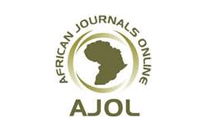Mansoura Veterinary Medical Journal
Document Type
Review Article
Subject Areas
Food Hygiene
Keywords
Abattoir, Meat, Nutritive value, Postmortem changes, Microbial growth.
Abstract
Meat is an essential component of a healthy and well-balanced diet and has played a crucial role in human evolution over the years because it is an excellent source of highly digested protein, vitamin B12, vitamin B6, niacin, iron, copper, zinc, and selenium. Raw meat is considered an unavoidable source of microbial contamination due to its enriched nutrient composition, high pH (5.5 to 6.5), and water activity (0.98 to 0.99); consequently, the meat is regarded as a perfect medium for bacterial growth. Meat deterioration begins immediately after slaughter because of faulty practices during the processing stages such as skinning, evisceration, storage, and distribution. Abattoirs play a crucial role in providing safe meat for consumers. Consequently, the application of strict hygienic measures during slaughtering and effective sanitation programs in abattoirs in developing countries is a compulsory action for obtaining high-quality meat. In addition, the application of Hazard Analysis and Critical Control Point (HACCP) at every stage of the production chain is crucial to protect public health and increase the safety, quality, and shelf stability of meat.
How to Cite This Article
Elshebrawy, Hend Ali; Kasem, Nahed Gomaa; and Sallam, Khalid Ibrahim
(2023)
"An overview of meat composition, postmortem changes, and sources of microbial contamination in developing countries abattoirs,"
Mansoura Veterinary Medical Journal: Vol. 24:
Iss.
4, Article 11.
DOI: https://doi.org/10.35943/2682-2512.1209
Receive Date
11 June 2022
Accept Date
13 September 2022
Publication Date
2023






